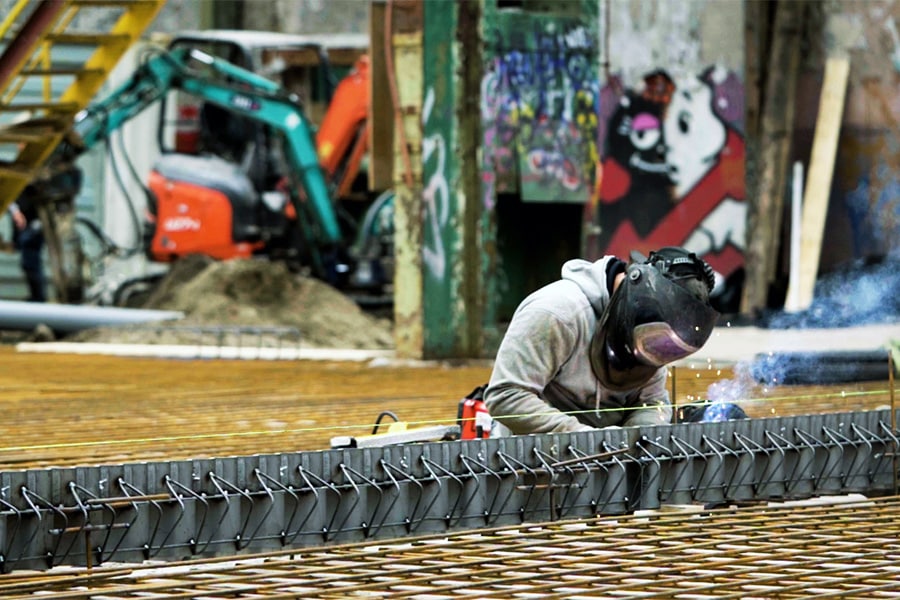
Cement & Concrete Roadmap 2050
The Green Deal commits Europe to becoming the first climate-neutral continent by 2050. It is also about the transition to a more circular economy, in which growth is decoupled from the use of raw materials. These goals should make the European Union a modern, sustainable and inclusive economy.
As is well known, the building sector is a particularly effective lever for taking action. Indeed, the environmental impact of buildings is significant, both in the production phase of materials and technical facilities and in the use phase. At the European level, they are estimated to account for 40 % of energy consumption and 36 % of climate footprint.
Against this background, FEBELCEM, the Federation of the Belgian Cement Industry, has developed its "Cement & Concrete Roadmap 2050. Central to this is concrete, an essential material for infrastructure works and buildings in a sustainable society. The Roadmap describes how cement, through the production and applications of concrete, contributes to circular and climate-neutral construction. The image of a Roadmap symbolizes the path to the 2050 goals. It is structured around five areas of action, abbreviated to "5 Cs. Clinker (clinker, the active ingredient in cement), Cement, Concrete (concrete), Construction and (re) Carbonatation.

This Roadmap represents a profound transformation of the building value chain and requires the commitment of each of the stakeholders: building owners, architects, material producers, contractors, public authorities ... Similarly, a project must be analyzed at each stage from an environmental footprint and circular economy point of view, from design phase to recycling or reuse, through the construction and use phase.
The cement industry wants to be at the forefront of this transition. Therefore, the Roadmap proposes benchmarks to reduce the carbon intensity of cement (kg CO2 per ton of cement) compared to the reference year 1990, in order to achieve climate neutrality by 2050. It should be emphasized that part of the way has already been done today and the climate footprint of cement has already been reduced by nearly 30 %. Although there are still many unknown factors, the Roadmap describes how to address the reduction of the "remaining 70 %" and how to contribute to the 2030 European intermediate target of reducing greenhouse gas emissions by 55 %.

As a central player in industrial symbiosis, the cement industry will need to further intensify cooperation with other sectors, especially in the areas of neutral electricity, hydrogen and CO2 transport and use.
Finally, we must not forget that this profound transformation requires colossal investments. The financial resources provided by the European Union through various support mechanisms are not enough. If the sector wants to invest in new processes and new facilities, the role of the public authorities is essential to guarantee legal certainty and create mechanisms to prevent "carbon leakage.
The "Cement & Concrete Roadmap 2050" covers the entire construction value chain and encompasses a broad spectrum of themes. Each theme requires more than a brief explanation. FEBELCEM therefore undertakes to develop it further in the coming weeks and months and report on progress towards circular and climate-neutral construction.



